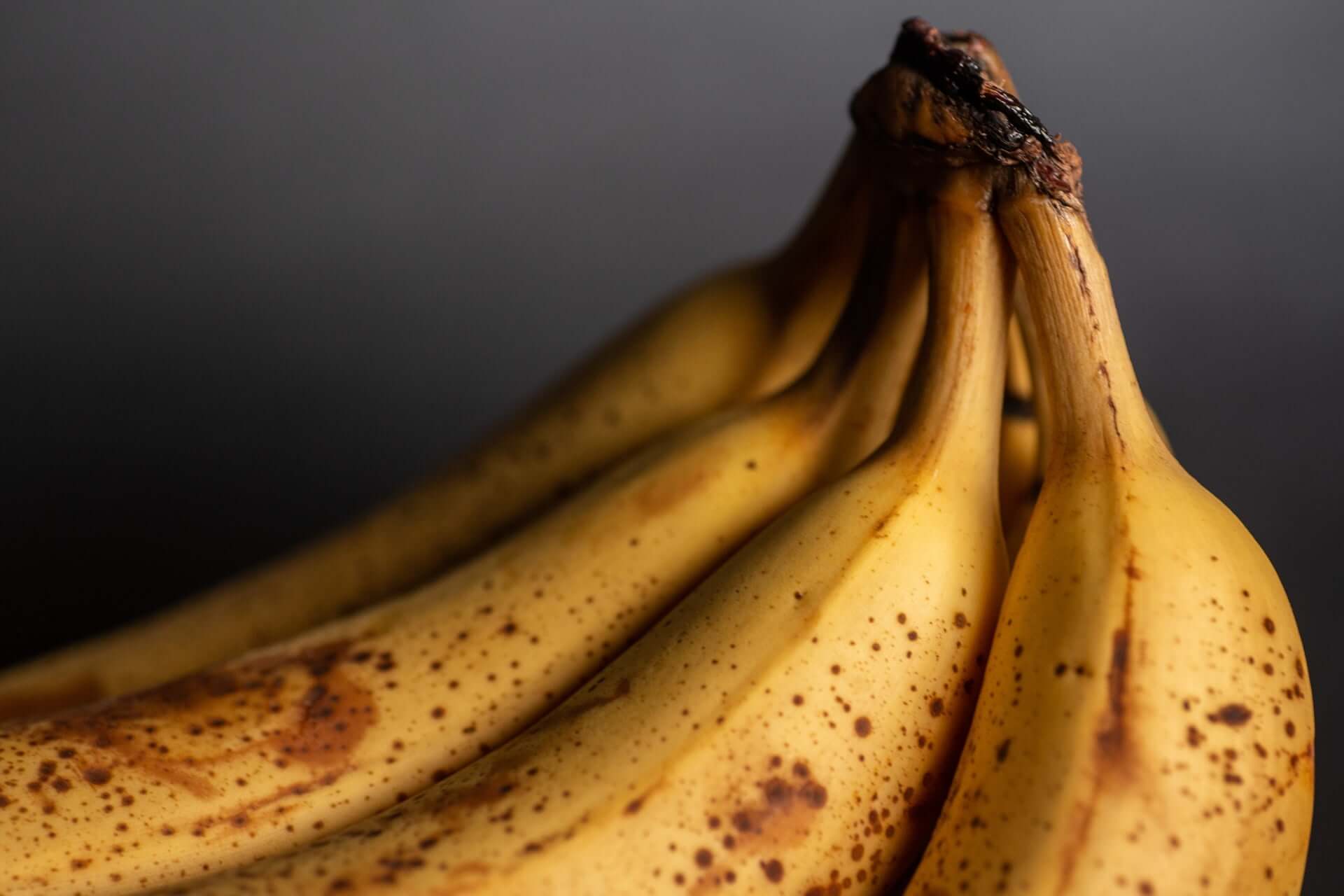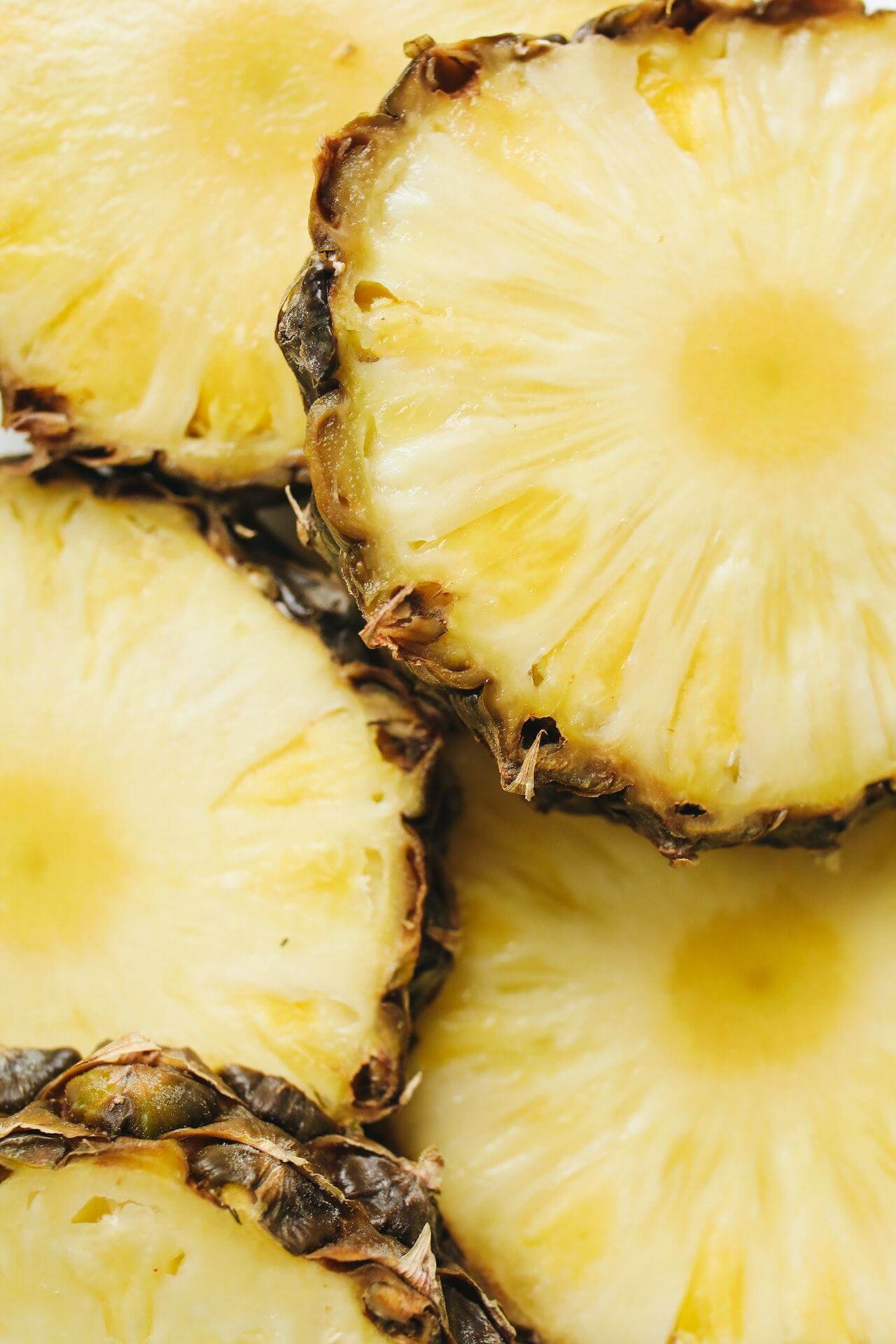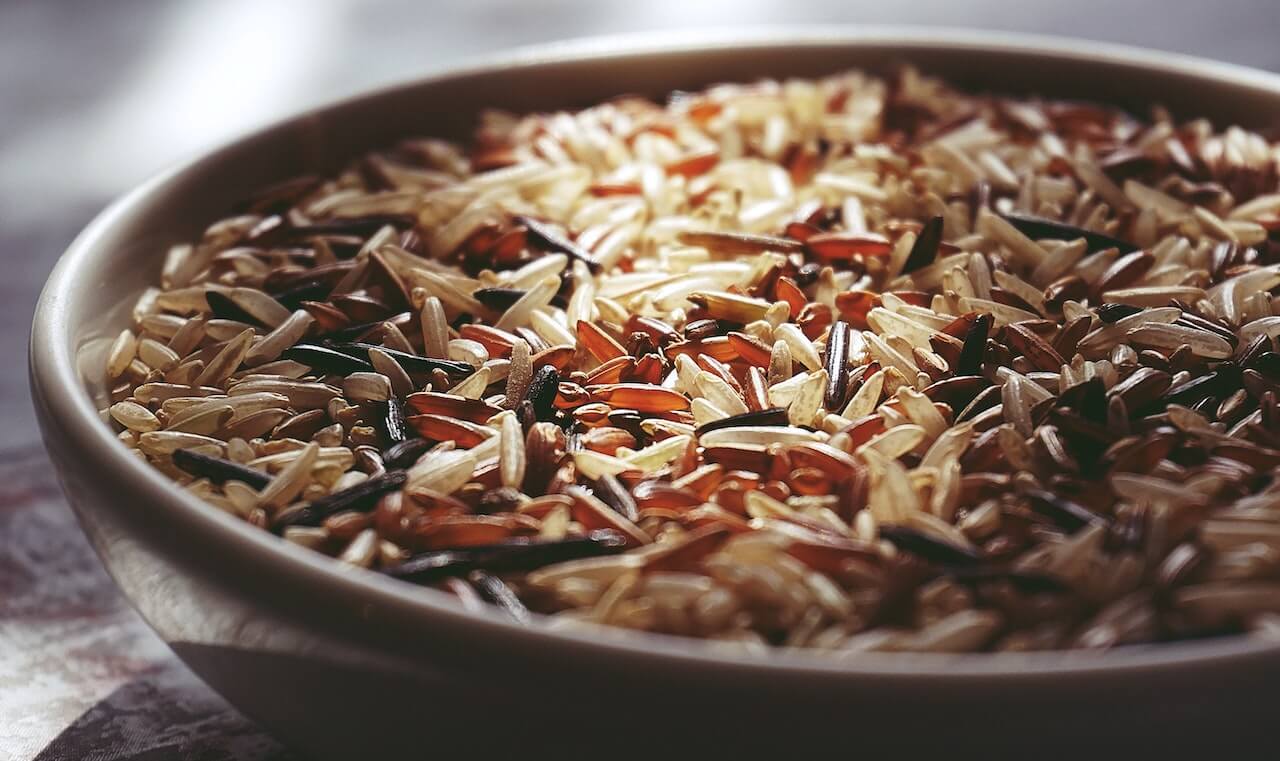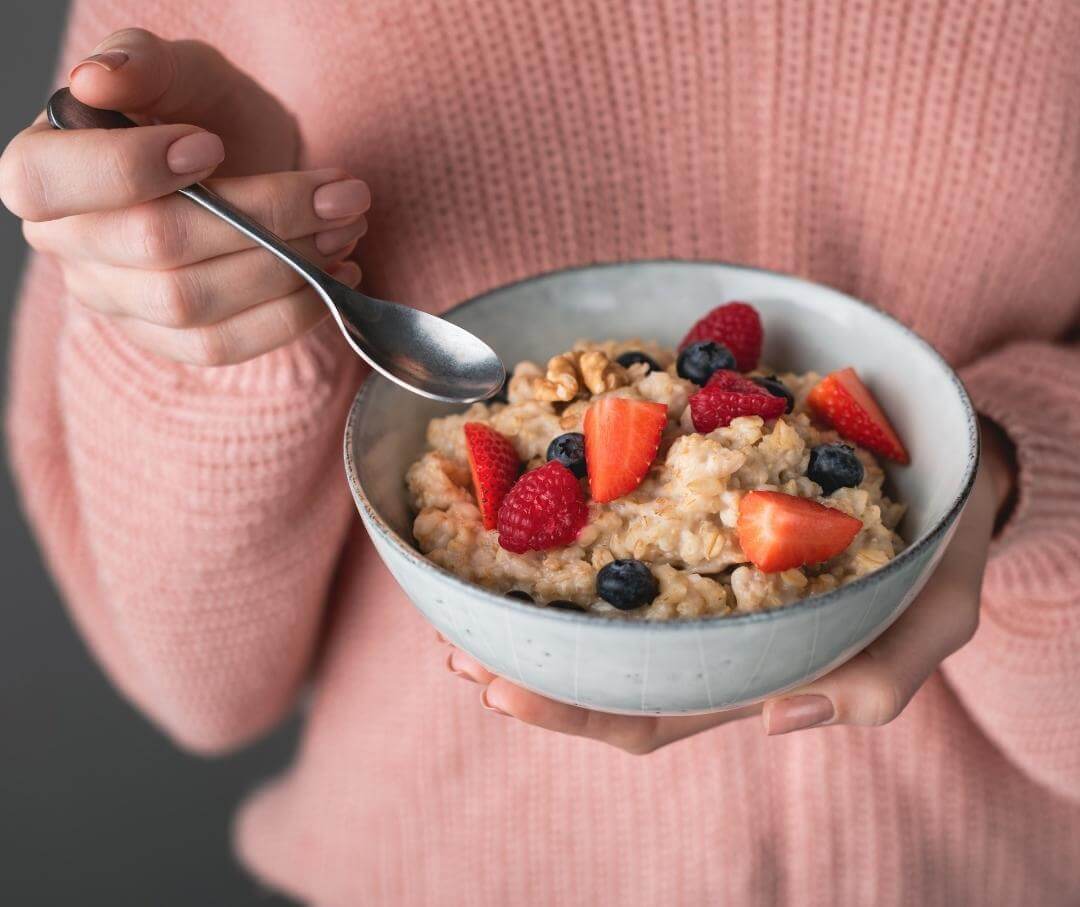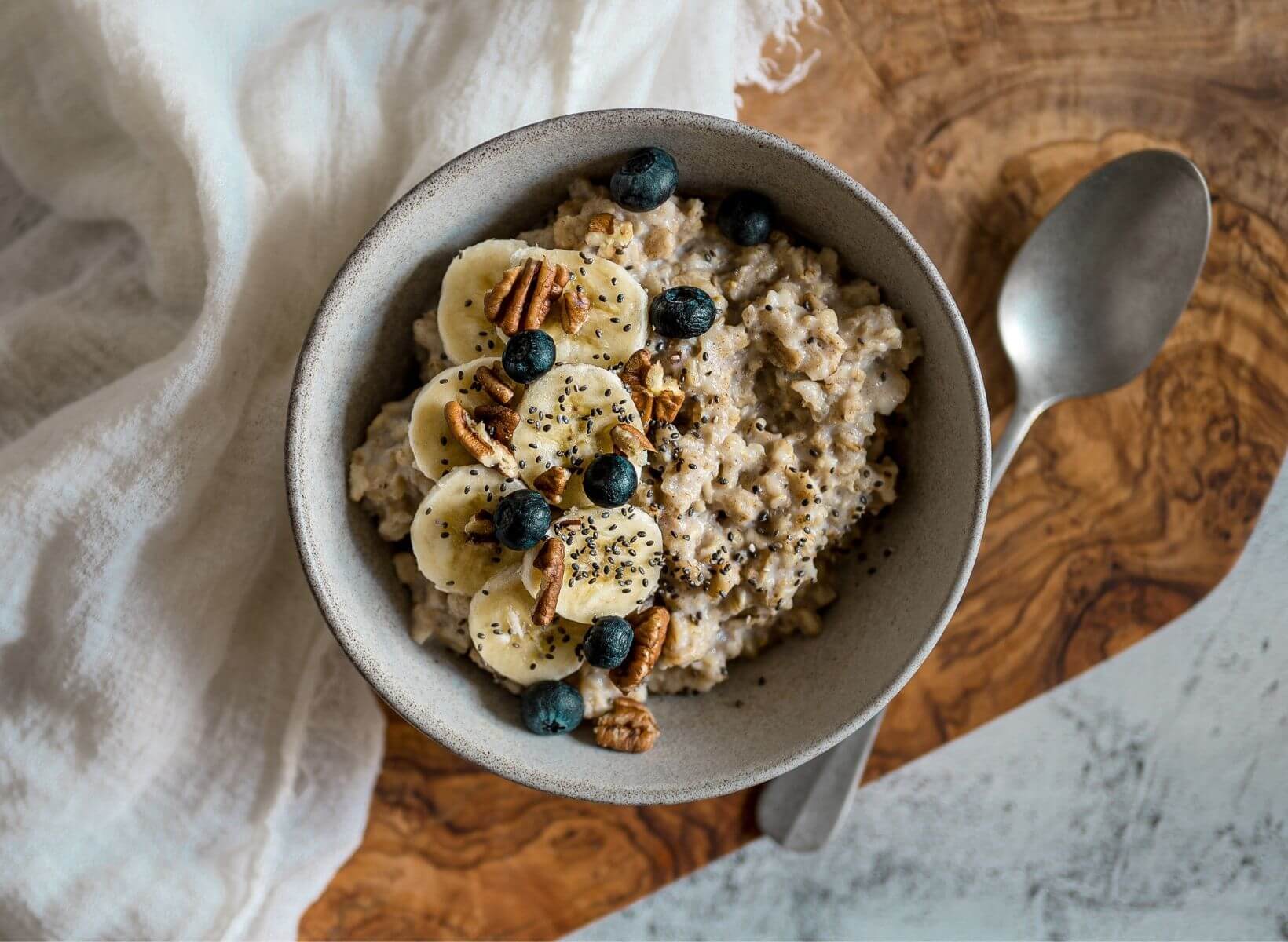The glycemic index (GI) is often used to support blood sugar management, but don’t get the wrong idea. It’s not just a tool for those with diabetes. Understanding the science behind the foods we eat and how they affect our blood sugar can help us navigate several aspects of our health, such as:
- Weight management
- Prevention of chronic disease
- Cardiovascular health
- Diabetes control
Not only does the glycemic index help us be more intentional with our food choices, but it can also enhance weight loss, help prevent heart disease, and stabilize blood glucose levels. So, how does the glycemic index work?
Put simply, the glycemic index measures how quickly a carbohydrate-containing food causes our blood sugar to rise. Foods are measured on a scale of zero to 100 and categorized as low, medium, and high GI foods. The more rapidly a food increases your blood sugar when eaten on its own, the higher the GI score. The GI scale is broken down as follows:
- High GI foods: 70-100
- Medium GI foods: 56-69
- Low GI foods: 20-55
It’s important to remember that the GI scale doesn’t measure “good vs. bad.” All foods can fit into a well-balanced diet, but understanding a food’s impact on your blood sugar levels can help you fuel your body properly so you can feel good all day. In this article, we’ll focus on low-glycemic index foods, specifically apples, and their health benefits.
What Are Low GI Fruits?
Most whole fruits are considered low-GI foods. Fruits contain a natural sugar called fructose, and when fructose is ingested, the liver breaks it down quickly, leading to a rise in blood sugar levels.
Fruits also contain fiber, which helps slow digestion and prevent dreaded blood sugar spikes. Fruits with edible peels (apples, berries, pears, cherries, etc.) tend to have the most fiber, resulting in slower digestion and lower GI scores.
Benefits of Apples
You know how the saying goes; “An apple a day keeps the doctor away.” While that may be overly optimistic, it’s safe to say that apples have a lot to offer when it comes to our health. They’re a nutritious snack packed with vitamins and fiber, and they are a low glycemic fruit. But we’ll get to that a bit later.
While the exact nutrition content will vary between the different types of apples, the U.S. Department of Agriculture (USDA) has found that there are approximately 25 grams (g) of total carbohydrate in one medium apple. They also found that the same medium apple contains about 4 g of dietary fiber, which can support digestion and blood sugar control.
Apples are rich in vitamins and antioxidants such as quercetin, catechin, phloridzin, and chlorogenic acid, all of which help support your immune system. One medium apple provides approximately 10% of the average adult’s daily vitamin C needs. You’ll also find that apples contain a decent percentage of vitamin A, vitamin B6, and potassium.
There’s a reason apples rank high among the most popular fruits. In addition to their delicious taste and culinary versatility, they offer a wide range of health benefits:
- The daily consumption of apples may reduce the risk of cardiovascular disease.
- They contain a powerful type of fiber called pectin, which acts as a prebiotic and feeds the good bacteria in your gut.
- The antioxidants found in apples may have beneficial effects against certain cancers, including breast, lung, and digestive tract cancers.
- Apple consumption may reduce the risk of type 2 diabetes.
Do Apples Raise Blood Sugar?
Glycemic Index and Glycemic Load of Apples
Carbohydrates serve an important purpose in the body. They provide glucose, the main energy source for bodily functions and physical activity.
While we need carbs, we also don’t want glucose levels to spike too quickly. Enter low GI foods, like apples. On a scale of zero to 100, apples score around 39 on the glycemic index, which is relatively low. In comparison, pineapple has an average score of 82.
It’s also worth looking at a food’s glycemic load (GL) when monitoring your blood sugar levels. The glycemic load considers both the food’s glycemic index and the carbohydrates provided in each serving. Since each person responds to foods differently, glycemic load values can give a better estimate of the real-life impact a food might have when eaten.
Apples and Diabetes: Are Apples Good For Diabetics?
To calculate the GL of a particular food, use this equation:
GL = (GI x grams of carbohydrates)/100
Depending on your calculations, you can classify foods as:
- High GL foods: 20 and above
- Moderate GL foods: 11-19
- Low GL foods: 0-10
The average GL score for apples is around 6, meaning they are a low GI and low GL food. So what does that mean for your blood sugar? A low GI value paired with a low GL score establishes that apples are both filling and nutritious, and they help to keep your blood sugar stable.
Can Apples Help Weight Loss?

Short answer: yes!
A recent 2020 study found that participants who ate whole apples felt fuller for longer periods of time than when they consumed equal parts of apple juice or puree. The results show that whole apples reduce gastric emptying or the rate at which your stomach empties its contents.
If your health journey includes weight loss, eating apples may support your efforts. Apples are a filling snack due to their fiber and water content. That feeling of fullness after eating an apple can help satiate your appetite and reduce your overall calorie intake.
{{mid-cta}}
Ideas to Add Apples to Your Diet
If you’ve got organization on your side and you’re a meal-planning connoisseur, consider incorporating some delicious apples into your meals and snacks. Try these ideas next time you’re in the kitchen!
Apple Cinnamon Oatmeal
- In a medium saucepan, melt 1/2 tablespoon of butter. Add 1 cup of fresh diced apples,1 teaspoon of cinnamon, 1/4 teaspoon each of ginger and nutmeg, and a pinch of salt. Cook until the apples are tender.
- In a separate pot, cook 1 cup of old-fashioned oats on the stove.
- Once the oats have finished cooking, serve and top with your cooked apples.
Apple Cinnamon Overnight Oats
- In a 16-ounce mason jar, combine 1/3 cup of old-fashioned oats, 1/2 teaspoon ground cinnamon, a pinch of ground ginger, a pinch of ground cloves, a pinch of salt, 1/2 medium apple (diced), 1/2 cup unsweetened vanilla almond milk, 1 1/2 teaspoons maple syrup, 1/2 cup plain Greek yogurt, one tablespoon chia seeds.
- Seal the jar and refrigerate overnight.
- When ready to eat, shake the jar to combine the ingredients, and enjoy!
Apple Grilled Cheese with Turkey
- Spread apple butter on two slices of whole-grain bread.
- Top with sharp cheddar cheese, Granny Smith apple slices, and turkey.
- Butter the outside of the sandwich and grill it on the panini press for 2-4 minutes.
Apple Crisps
- Core and thinly slice your favorite apples.
- Arrange the apple slices evenly on a baking sheet and sprinkle them with cinnamon.
- Bake at 200 degrees F until slices are crisp.
- Turn the oven off and let the apples cool for approximately an hour before taking a bite.
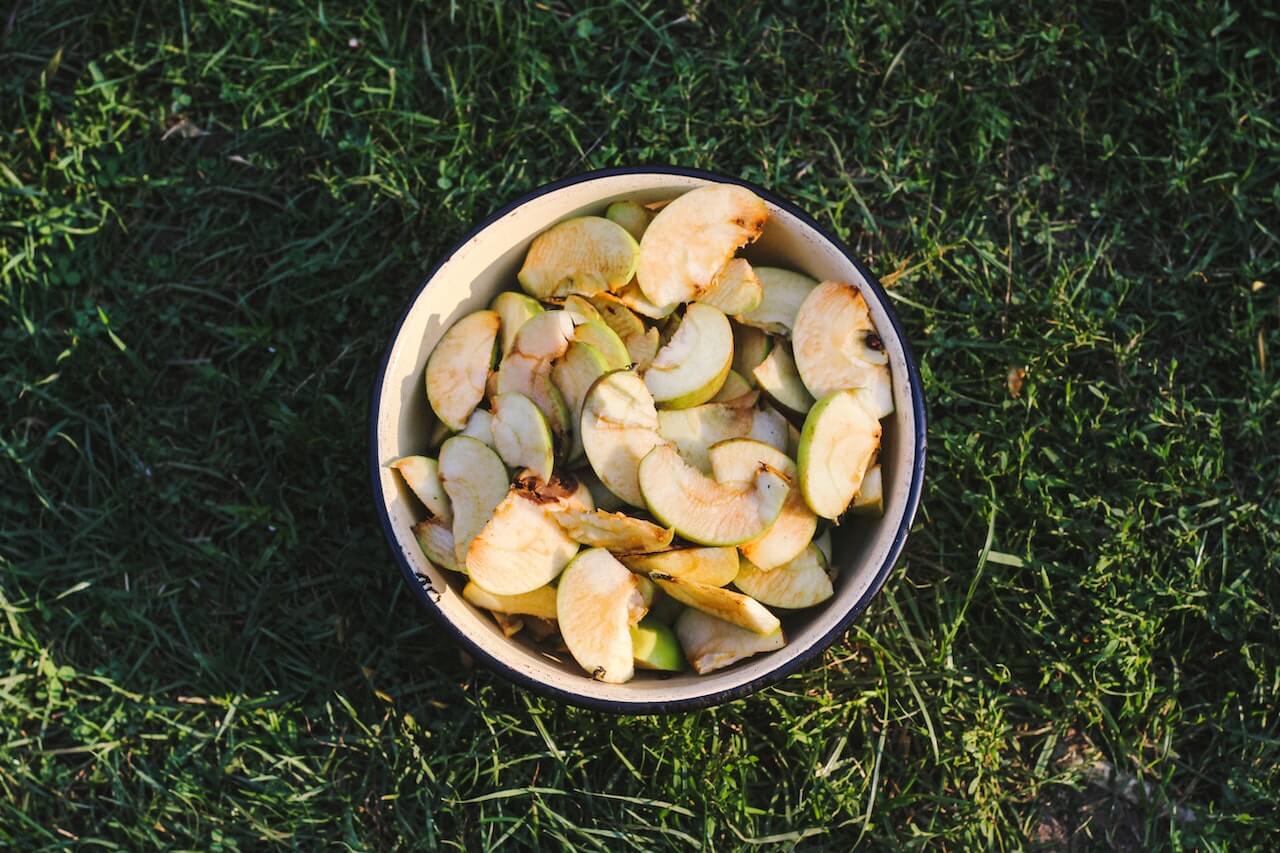
Apples and Peanut Butter
- Slice up your favorite apple.
- Dip in peanut butter.
- Simple as that!
Harvest Chicken Skillet with Apples
- Cut chicken breast into slices or cubes and brown in a skillet with olive oil.
- In a separate pan, cook 4 or 5 slices of thick-cut bacon.
- Sautee halved Brussels sprouts, cubed sweet potatoes, and onion. Stir in peeled and cubed Granny Smith apples and garlic, thyme, and cinnamon seasoning to your liking. Add 1 cup of low-sodium chicken broth and bring to a boil.
- Mix in chicken and bacon. Cook for a few minutes, and enjoy!
- Item 1
- Item 2
- item 3
Topics discussed in this article:
References
- https://fdc.nal.usda.gov/fdc-app.html#/food-details/171688/nutrients
- https://www.ncbi.nlm.nih.gov/pmc/articles/PMC442131/#:~:text=Apples%20contain%20a%20variety%20of,of%20which%20are%20strong%20antioxidants.
- https://ods.od.nih.gov/factsheets/VitaminC-HealthProfessional/#h2
- https://glycemicindex.com/gi-search/?food_name=apple,+golab+raw&product_category=fruit&country=United+States&gi=&gi_filter=&serving_size_(g)=&serving_size_(g)_filter=&carbs_per_serve_(g)=&carbs_per_serve_(g)_filter=&gl=&gl_filter=
- https://glycemicindex.com/gi-search/?food_name=pineapple,+raw+(ananas+comosa)&product_category=fruit&country=United+States&gi=&gi_filter=&serving_size_(g)=&serving_size_(g)_filter=&carbs_per_serve_(g)=&carbs_per_serve_(g)_filter=&gl=&gl_filter=
- https://academic.oup.com/jn/article/150/11/2890/5893501?login=false
- https://www.tandfonline.com/doi/full/10.1080/10408398.2019.1709801
- https://www.cambridge.org/core/journals/public-health-nutrition/article/apple-intake-and-cancer-risk-a-systematic-review-and-metaanalysis-of-observational-studies/FA751EC6DB3CA3627E0218950AC106CC
- https://academic.oup.com/cdn/article/3/10/nzz109/5580580





